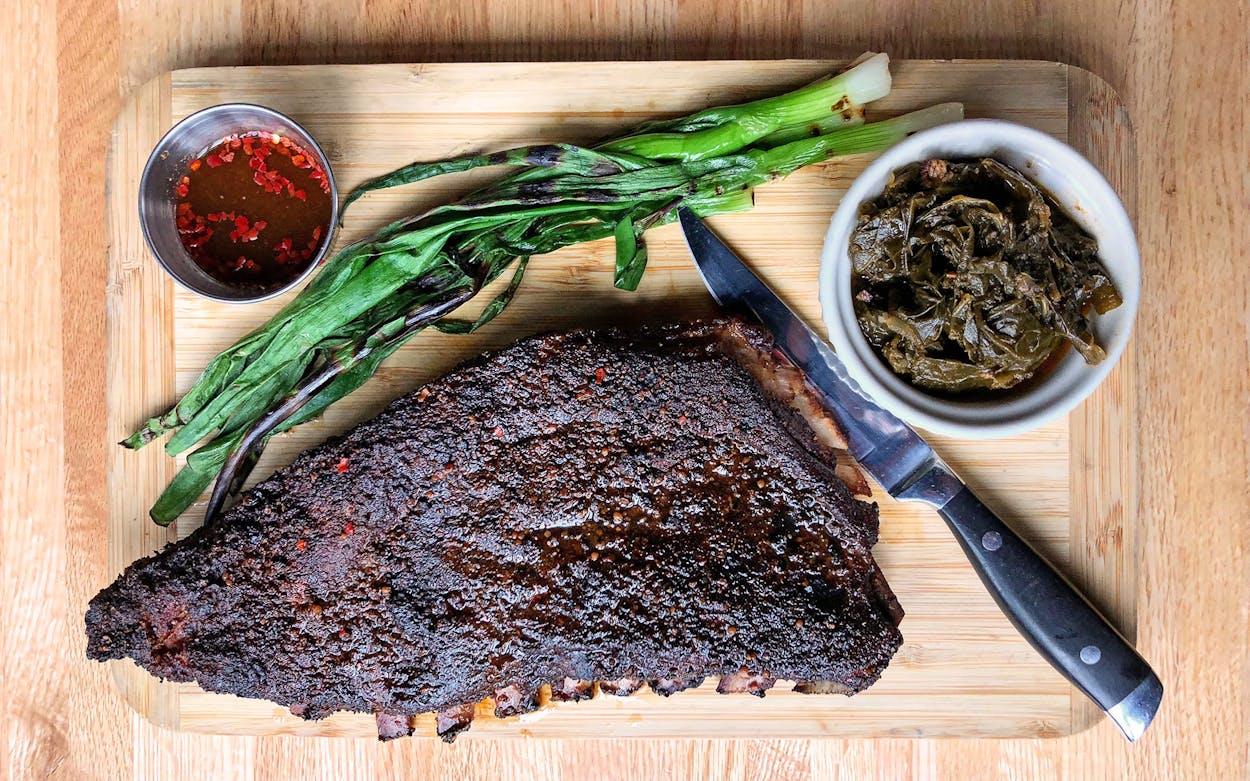It’s hard to find smoked lamb ribs in Texas. Some pitmasters call it mutton, and there are only a handful of joints left who still bother to cook it. So when I saw that 18th & Vine Barbeque in Dallas was offering a whole rack for a $19 lunch special, I hopped in the car.
Matt Dallman, the pitmaster at 18th & Vine, has played around with smoked lamb at festivals, but hasn’t served the ribs at the restaurant until now. He’s testing the waters to see whether diners will be receptive to the protein and the unusual spice mix he chose. As a tribute to his adopted nine-year-old son from Ethiopia, he used that country’s traditional berbere spice mix for the rub. “I can’t get my son to touch it,” Dallman says of the lamb breast, joking that “Nutella, honey, and Cinnamon Toast Crunch are about all I can get him to eat.”
The rub includes spices like cardamom, nutmeg, and fenugreek, which don’t make it into most Texas barbecue rubs. “Don’t get this mixed up with your paprika,” Dallman said when he handed me a sample. He bought it from an Ethiopian market in Richardson, and it’s also available at Eritrean markets or in bulk at Central Market. The dried chiles come through heavily along with the unmistakable cardamom flavor. There’s no salt or black pepper, so Dallman sprinkles some on the lamb ribs before a generous coating of the berbere. The ribs are then smoked in an Oyler rotisserie for 2 1/2 hours before being wrapped in foil and cooked another 2 1/2 hours.
Although the breast is a fatty cut, these ribs aren’t gamey at all. Dallman says the mild flavor is a trait of the Dorper lamb breed raised by Capra Foods in Goldthwaite. I liked that the rack is served uncut. Lamb ribs are best pulled apart in layers rather than eaten as individual bones. The rub had a robust kick from the heavy spice, but the result is more intense than spicy. The rack is mopped with a mixture of vinegar, Worcestershire, and red pepper—a cup of the sauce is also served alongside. I tried one bite without dipping, and then chose to dip every other morsel. The platter, which includes spicy greens and grilled green onions, could use some kind of starch, like flatbread, tortillas, or maybe even some injera to tie in the Ethiopian inspiration.
Lamb ribs are a messy business. It’s best to finish the rack before dealing with napkins. It might be a risk for your Easter pastels, but the special will run through the weekend and is worth trying out. If it sells well enough, Dallman says, “I think we’ll get it on the full-time menu.”








